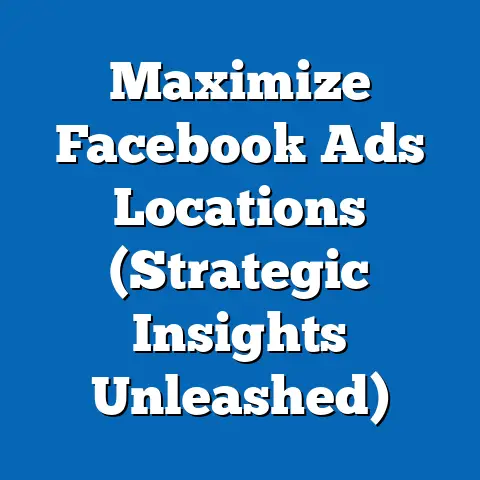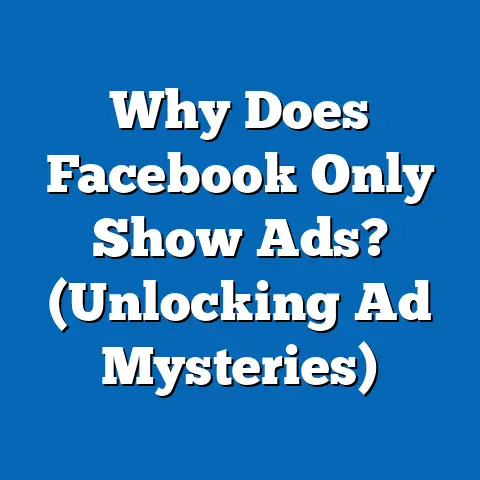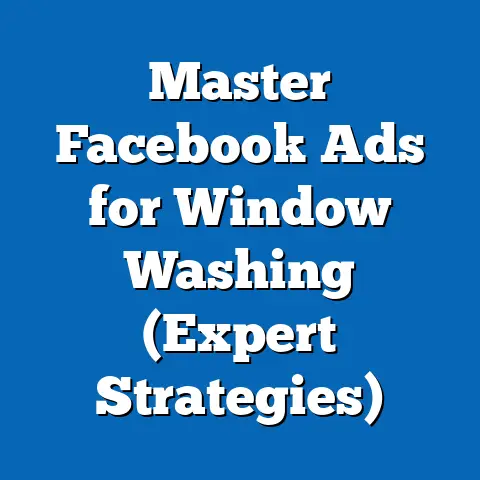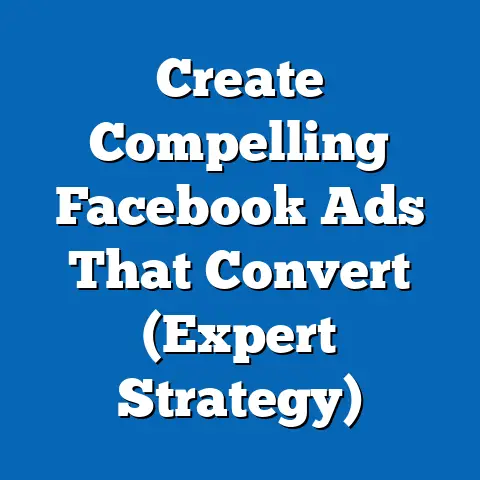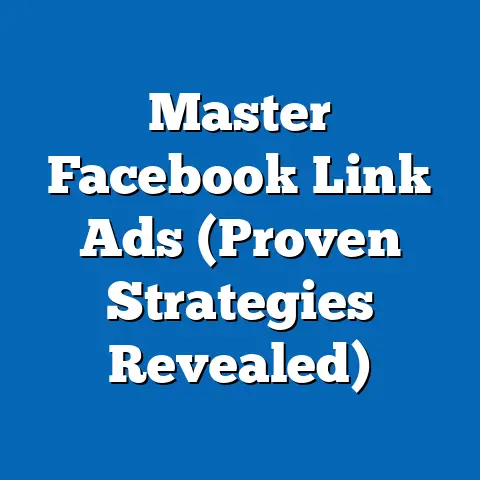Maximize Conversions with Leadpages (Boost Facebook Ads)
In the ever-evolving world of digital marketing, it’s easy for strategies to become stale. Just like a well-worn pair of shoes, your favorite marketing tactics can lose their effectiveness over time. This “wear-and-tear” effect can lead to diminishing returns on investment, leaving you wondering why your Facebook ads aren’t performing as well as they used to.
I’ve seen this happen countless times with clients. They start with a winning formula, but as the market changes and audiences become more sophisticated, those initial successes begin to fade. The key to staying ahead is constant optimization and a willingness to refresh your approach.
That’s where Leadpages comes in. It’s a powerful tool I’ve used to reinvigorate Facebook ad campaigns and maximize conversions. By creating dedicated, high-converting landing pages, you can breathe new life into your ads and see a significant boost in your results.
In this article, I’m going to walk you through how to use Leadpages to enhance your Facebook advertising efforts. We’ll cover everything from understanding the importance of landing pages to integrating them seamlessly with your ads and analyzing your performance. Get ready to unlock the full potential of your Facebook ad campaigns!
Understanding the Importance of Landing Pages
Let’s start with the basics: what exactly is a landing page? Simply put, a landing page is a standalone web page designed for a specific marketing or advertising campaign. It’s where visitors “land” after clicking on a link in an email, ad, or other marketing channel.
Unlike a general website homepage, a landing page is focused on a single objective, such as collecting leads, generating sales, or promoting a specific product or service. This laser-like focus is what makes landing pages so effective.
The Significance of Landing Pages in Facebook Ads
In the context of Facebook ads, landing pages play a crucial role in determining your conversion rates. When someone clicks on your ad, they’re expecting to find exactly what was promised in the ad copy and visuals. If they’re taken to a generic website page with irrelevant information, they’re likely to bounce, resulting in a wasted ad click and a missed opportunity.
A well-designed landing page, on the other hand, provides a seamless and relevant experience for the user. It reinforces the message of your ad, provides additional information, and guides them towards taking the desired action, whether it’s filling out a form, making a purchase, or signing up for a webinar.
I remember working with a client who was running Facebook ads to promote a free e-book. Initially, they were directing traffic to their website’s homepage, which had a lot of different information and calls to action. Their conversion rate was abysmal – less than 1%.
After creating a dedicated landing page specifically for the e-book, with a clear headline, compelling description, and a simple opt-in form, their conversion rate skyrocketed to over 10%! That’s a 10x improvement simply by using a targeted landing page.
The Impact on Conversion Rates: Stats and Case Studies
The numbers don’t lie. Studies have shown that using dedicated landing pages can significantly improve the performance of Facebook ad campaigns.
- Companies see a 55% increase in leads when they increase their number of landing pages from 10 to 15. (HubSpot)
- Businesses with 40+ landing pages generate 12 times more leads than those with five or fewer. (HubSpot)
- Landing pages have an average conversion rate of 9.7%, compared to a 2.4% conversion rate for general website traffic. (MarketingSherpa)
These statistics highlight the power of landing pages in driving conversions. By creating targeted landing pages for your Facebook ads, you can significantly increase your chances of turning clicks into customers.
Common Pitfalls of Not Using Dedicated Landing Pages
I’ve seen many businesses make the mistake of not using dedicated landing pages for their Facebook ads, and the results are often disappointing. Here are some common pitfalls to avoid:
- Irrelevant Content: Directing traffic to a generic website page with irrelevant content can confuse and frustrate users, leading to high bounce rates and low conversion rates.
- Lack of Focus: A website homepage typically has multiple calls to action and competing information, which can distract users from the intended goal of your ad campaign.
- Poor User Experience: A poorly designed website can be difficult to navigate and may not be optimized for mobile devices, resulting in a negative user experience and lost opportunities.
- Missed Tracking Opportunities: Without a dedicated landing page, it can be difficult to track the performance of your Facebook ads and optimize your campaigns for better results.
Takeaway: Don’t make the mistake of sending your Facebook ad traffic to a generic website page. Invest in creating dedicated landing pages that are tailored to your ad campaigns and designed to maximize conversions.
Next Steps: Start brainstorming ideas for targeted landing pages for your upcoming Facebook ad campaigns. Think about the specific goals of each campaign and how you can create a landing page that aligns with those goals.
Overview of Leadpages
Now that we’ve established the importance of landing pages, let’s dive into Leadpages. It is a leading landing page builder that empowers marketers to create high-converting landing pages without needing any coding skills.
Features and Benefits of Leadpages
Leadpages offers a wide range of features and benefits that make it an ideal tool for Facebook advertising:
- User-Friendly Interface: Leadpages has a drag-and-drop interface that makes it easy to create and customize landing pages, even if you’re not a designer or developer.
- Customizable Templates: Leadpages offers a library of professionally designed templates that are optimized for different industries and marketing goals. You can easily customize these templates to match your brand and message.
- Mobile-Responsive Design: All Leadpages templates are mobile-responsive, ensuring that your landing pages look great on any device.
- A/B Testing: Leadpages allows you to easily A/B test different elements of your landing pages, such as headlines, images, and calls to action, to determine what resonates best with your target audience.
- Integration with Facebook Ads: Leadpages integrates seamlessly with Facebook ads, making it easy to create targeted campaigns that drive traffic and conversions.
- Analytics and Tracking: Leadpages provides detailed analytics and tracking tools that allow you to monitor the performance of your landing pages and make data-driven decisions for ongoing optimization.
I’ve found the drag-and-drop interface to be incredibly intuitive, even for clients who are new to landing page creation. The pre-designed templates save a ton of time, and the A/B testing feature allows you to continuously improve your results.
Seamless Integration with Facebook Ads
One of the biggest advantages of Leadpages is its seamless integration with Facebook ads. You can easily connect your Leadpages account to your Facebook ad account and create targeted campaigns that drive traffic directly to your landing pages.
This integration makes it easy to track the performance of your ads and landing pages, allowing you to optimize your campaigns for better results. You can also use Leadpages’ tracking parameters to gain valuable insights into your audience and their behavior.
Takeaway: Leadpages is a powerful landing page builder that offers a wide range of features and benefits for Facebook advertising. Its user-friendly interface, customizable templates, and seamless integration with Facebook ads make it an ideal tool for marketers of all skill levels.
Next Steps: Explore the features and benefits of Leadpages and consider signing up for a free trial to see how it can help you improve your Facebook ad campaigns.
Creating High-Converting Landing Pages with Leadpages
Now, let’s get into the nitty-gritty of creating high-converting landing pages with Leadpages. Here’s a step-by-step guide to help you get started:
Step 1: Select a Template
The first step is to select a template that aligns with the objective of your Facebook ad campaign. Leadpages offers a wide range of templates that are optimized for different goals, such as lead generation, sales, and webinar registration.
Take some time to browse the template library and choose a template that resonates with your brand and message. Consider the overall design, layout, and visual elements of the template and how they will contribute to your conversion goals.
I often start by filtering templates based on my specific campaign objective. For example, if I’m running a lead generation campaign, I’ll filter for templates that are designed for collecting email addresses.
Step 2: Craft a Compelling Headline
Your headline is one of the most important elements of your landing page. It’s the first thing visitors will see, and it needs to grab their attention and make them want to learn more.
Your headline should be clear, concise, and relevant to the message of your Facebook ad. It should also highlight the key benefit or value proposition of your offer.
Here are some tips for crafting a compelling headline:
Focus on the benefits of your offer and how it will solve their problems or meet their needs. Use clear and concise language that is easy to understand.
Here are some tips for writing persuasive copy:
- Focus on the benefits: Highlight the value that visitors will receive by taking action on your landing page.
- Use testimonials: Include testimonials from satisfied customers to build trust and credibility.
- Address objections: Anticipate potential objections and address them proactively in your copy.
- Use a clear call to action: Tell visitors exactly what you want them to do next.
Step 4: Incorporate High-Quality Images and Videos
Visual elements can significantly enhance the effectiveness of your landing page. Use high-quality images and videos to capture attention, illustrate your message, and build trust.
Choose images and videos that are relevant to your offer and that resonate with your target audience. Make sure your visuals are professionally produced and optimized for web use.
I’ve found that using images of real people, rather than stock photos, can significantly improve conversion rates. People are more likely to connect with images that feel authentic and relatable.
Step 5: Optimize Your Call-to-Action (CTA)
Your call-to-action (CTA) is the most important element of your landing page. It’s the button or link that visitors click on to take the desired action, such as filling out a form, making a purchase, or signing up for a webinar.
Your CTA should be clear, concise, and visually appealing. Use strong action words that encourage visitors to click. Make sure your CTA stands out from the rest of your landing page and is easy to find.
Here are some tips for optimizing your CTA:
- Use strong action words: Use words like “Get Started,” “Download Now,” or “Sign Up Today.”
- Make it visually appealing: Use a button or link that stands out from the rest of your landing page.
- Place it strategically: Place your CTA in a prominent location on your landing page, such as above the fold or at the end of your copy.
- Test different variations: A/B test different variations of your CTA to see what resonates best with your target audience.
Step 6: A/B Test Your Landing Page
A/B testing is the process of comparing two versions of your landing page to see which one performs better. By A/B testing different elements of your landing page, such as headlines, images, and CTAs, you can identify what resonates best with your target audience and optimize your landing page for higher conversion rates.
Leadpages makes it easy to A/B test your landing pages. Simply create two versions of your landing page with different variations of the elements you want to test. Then, use Leadpages’ A/B testing tool to split traffic between the two versions and track the results.
Takeaway: Creating high-converting landing pages with Leadpages involves selecting a template, crafting a compelling headline, writing persuasive copy, incorporating high-quality visuals, optimizing your CTA, and A/B testing your landing page.
Next Steps: Start creating your first landing page with Leadpages and experiment with different elements to see what works best for your target audience.
Integrating Leadpages with Facebook Ads
Now that you’ve created a high-converting landing page with Leadpages, it’s time to integrate it with your Facebook ads. Here’s how to do it:
Step 1: Connect Leadpages with Facebook Ads
The first step is to connect your Leadpages account with your Facebook ad account. This will allow you to easily track the performance of your ads and landing pages and optimize your campaigns for better results.
To connect your Leadpages account with Facebook ads, go to the Integrations section in your Leadpages account and select Facebook. Follow the instructions to authorize the connection.
Step 2: Create a Facebook Ad
Next, create a Facebook ad that directs traffic to your Leadpages landing page. When creating your ad, make sure to use compelling ad copy and visuals that are relevant to the content of your landing page.
Your ad should clearly communicate the value proposition of your offer and encourage users to click through to your landing page.
Step 3: Design Facebook Ads that Complement Your Landing Page
It’s crucial to ensure that your Facebook ads and landing pages work together seamlessly. This means that your ads should complement the content of your landing page and provide a cohesive user experience.
Use the same branding, messaging, and visual elements in your ads and landing pages to create a consistent and recognizable experience for users. This will help to build trust and credibility and increase your chances of converting clicks into customers.
Step 4: Target the Right Audience
Targeting the right audience on Facebook is essential for maximizing the effectiveness of your ads and landing pages. Use Facebook’s targeting options to reach users who are most likely to be interested in your offer.
Consider factors such as demographics, interests, behaviors, and custom audiences when targeting your ads. The more targeted your ads are, the more likely you are to drive qualified traffic to your landing pages and achieve your conversion goals.
I’ve found that creating custom audiences based on website visitors or email subscribers can be a highly effective way to target your Facebook ads. These users are already familiar with your brand, making them more likely to convert.
Takeaway: Integrating Leadpages with Facebook ads involves connecting your accounts, creating a Facebook ad that directs traffic to your landing page, designing ads that complement your landing page, and targeting the right audience.
Next Steps: Connect your Leadpages account with your Facebook ad account and create a targeted Facebook ad campaign that drives traffic to your high-converting landing page.
Analyzing and Optimizing Performance
Once you’ve launched your Facebook ad campaign and integrated it with your Leadpages landing page, it’s important to track and analyze your performance to see what’s working and what’s not.
Key Performance Indicators (KPIs) to Focus On
Here are some key performance indicators (KPIs) that you should focus on when analyzing your Facebook ad and landing page performance:
- Conversion Rate: The percentage of visitors who take the desired action on your landing page, such as filling out a form, making a purchase, or signing up for a webinar.
- Bounce Rate: The percentage of visitors who leave your landing page without interacting with it.
- Cost Per Acquisition (CPA): The cost of acquiring a new customer through your Facebook ad campaign.
- Click-Through Rate (CTR): The percentage of users who click on your Facebook ad.
- Cost Per Click (CPC): The cost of each click on your Facebook ad.
Using Leadpages Analytics Tools
Leadpages provides detailed analytics tools that allow you to track the performance of your landing pages and gain actionable insights into your audience and their behavior.
Use Leadpages’ analytics tools to monitor your conversion rates, bounce rates, and other key metrics. Analyze the data to identify areas for improvement and make data-driven decisions for ongoing optimization.
Making Data-Driven Decisions for Ongoing Optimization
The key to maximizing the effectiveness of your Facebook ad campaigns and landing pages is to continuously analyze your performance and make data-driven decisions for ongoing optimization.
Use the insights you gain from your analytics to identify areas where you can improve your ads, landing pages, and targeting. Experiment with different variations of your ads and landing pages to see what resonates best with your target audience.
Remember, optimization is an ongoing process. By continuously analyzing your performance and making data-driven decisions, you can significantly improve your results and achieve your marketing goals.
Takeaway: Analyzing and optimizing your Facebook ad and landing page performance involves tracking key performance indicators, using Leadpages’ analytics tools, and making data-driven decisions for ongoing optimization.
Next Steps: Start tracking your Facebook ad and landing page performance and use the insights you gain to make data-driven decisions for ongoing optimization.
Conclusion
Leveraging Leadpages to create high-converting landing pages is a game-changer for your Facebook ad campaigns. By providing a seamless and relevant experience for your audience, you can significantly increase your conversion rates and achieve your marketing goals.
I encourage you to take action and explore the features of Leadpages. Apply the strategies discussed in this article to revitalize your Facebook ad campaigns and unlock the potential for enhanced conversions and business growth.
Don’t let your marketing strategies become worn out. Embrace the power of Leadpages and take your Facebook advertising to the next level!
Call to Action
I’d love to hear about your experiences with Facebook ads and Leadpages. Share your thoughts, questions, and insights in the comments below. Let’s learn from each other and maximize our digital marketing strategies together!

